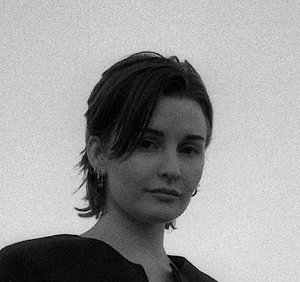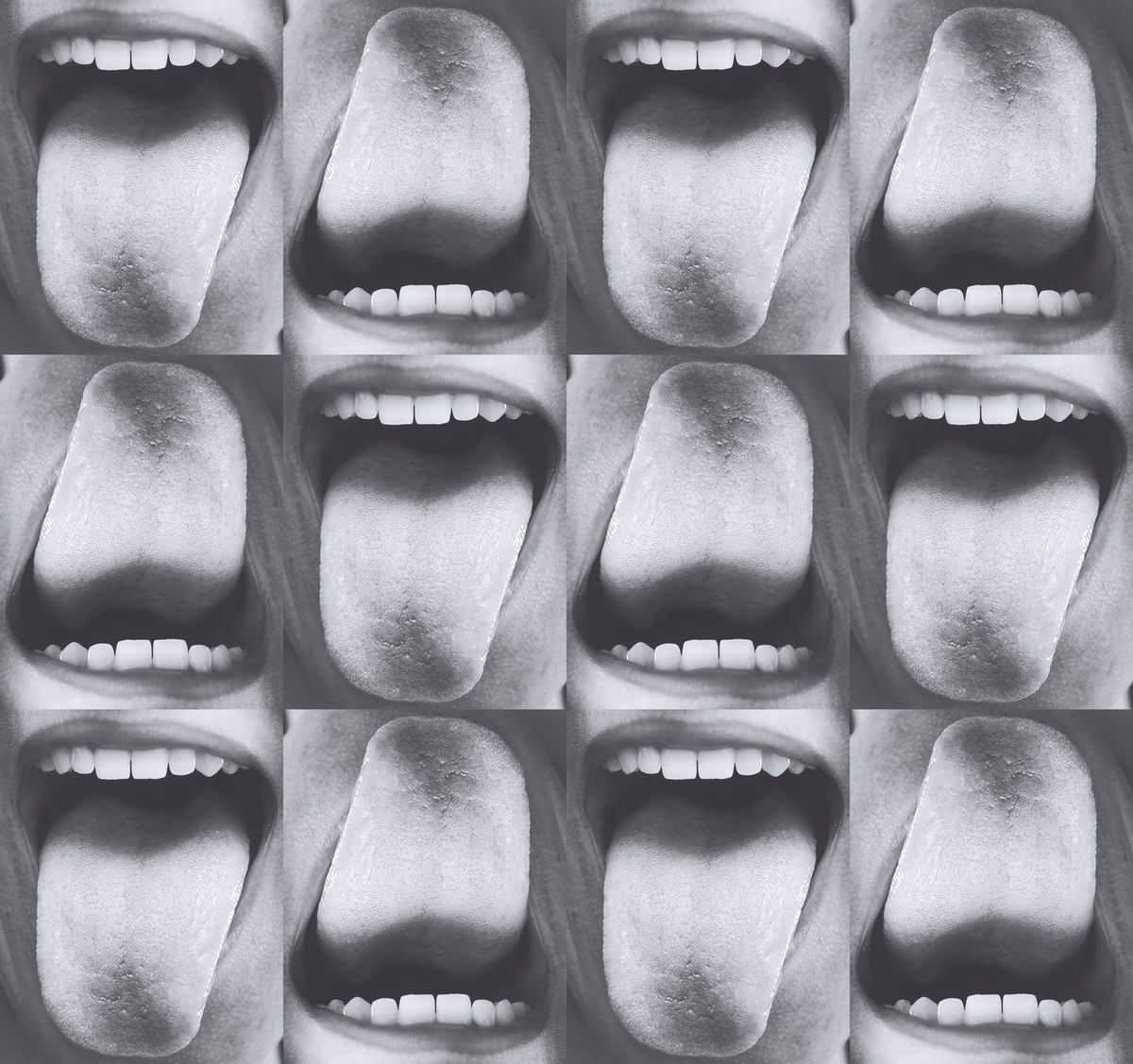Ed: Brief content warning—this article contains pictures of bifurcated tongues.
Your body is a wind instrument. In the same way a trumpet creates sounds distinct from a trombone’s, different bodily anatomy produces distinct vocal characteristics. Vocalization is all about how air is manipulated on its way in or out of a body.
Linguistics undergrads learn about the vocal system and how your anatomy moves and contracts to form human speech. You begin to see vocal cords as a reed and your head as a resonant chamber. I remember my own classes at University of Kansas making me hyper aware of the way people spoke, even imagining corresponding phonetic symbols as subtitles. Like my Swedish friend whose accent sounds like a whisper. To me, “raspberries” is /ˈɹæzˌbɛɹiz/ where the s’s had hard /z/ sounds but for her it’s /ˈɹæsˌbɛɹis/ where the s’s had soft sound. The only difference between these sounds is that your vocal cords are either vibrating /z/ or not /s/. The Swedes are quite literally soft spoken people.
These phonetic symbols are characters from International Phonetic Alphabet (IPA)5, a universal system for transcribing human speech. Each depicts individual units of sounds (called phones). It works for every language and vocal sound, from Berber to beat-boxing. You can even write the sound of a kiss [ʘ], known as a bilabial click. It considers all of the ways air can be manipulated in a human vocal system, leaving no sound unaccounted for — unless you have an anatomical adaptation.
This person was capable of creating sounds we had no definers for.
Two experiences challenged what I thought I knew about the phonetic alphabet. First, at a party in college, I met someone with a split tongue like a snake’s. I immediately wondered how you would fit the novel sounds she could make with two tongues into the current phonetic system. I quickly realized you could not. This person was capable of creating sounds we had no definers for.
Then, a few years after college, I discovered the yoga move Kechari mudra, where you work your tongue to the back of your throat and into the nasal cavity. It’s made possible with religious stretching and practice or by getting your frenulum severed. It looks like this:
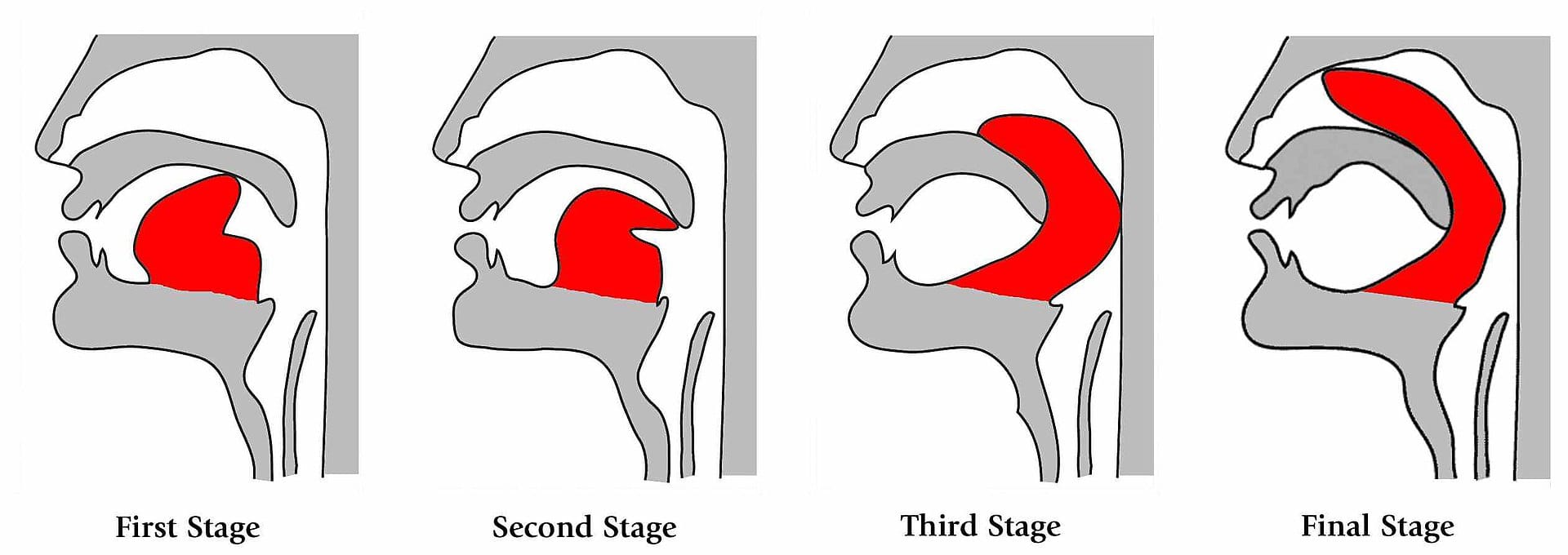
Once again, the phonetic system failed to accommodate the unique sounds producible from this position. I wondered how an active linguistics researcher would respond to this so I forwarded the Wikipedia article to my old professor, Allard Jongman.
“I had no idea,” Jongman wrote. “I will definitely be including these images in my class from now on. The big question is if any sounds produced this way have been recorded!”
We can apply lessons from the existing IPA to formalize those sounds. Body modifiers can restructure their anatomy in such a way that forces the system to expand. And expanding the system strikes me as valuable for more than just body modifiers.
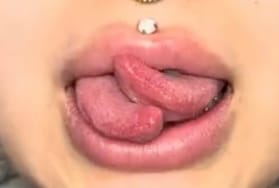
Language was my academic focus but I’ve been working professionally in biotechnology, specifically in genetic engineering. I get to work with organisms of all kinds, from earthworms to mammals to amphibians. The inevitable language lens I bring to the lab has me thinking about linguistic creatures and anatomy all the time. An expanded IPA could prepare us for a Sci-Fi-like future where spoken language emerges from bodies very different from our own.
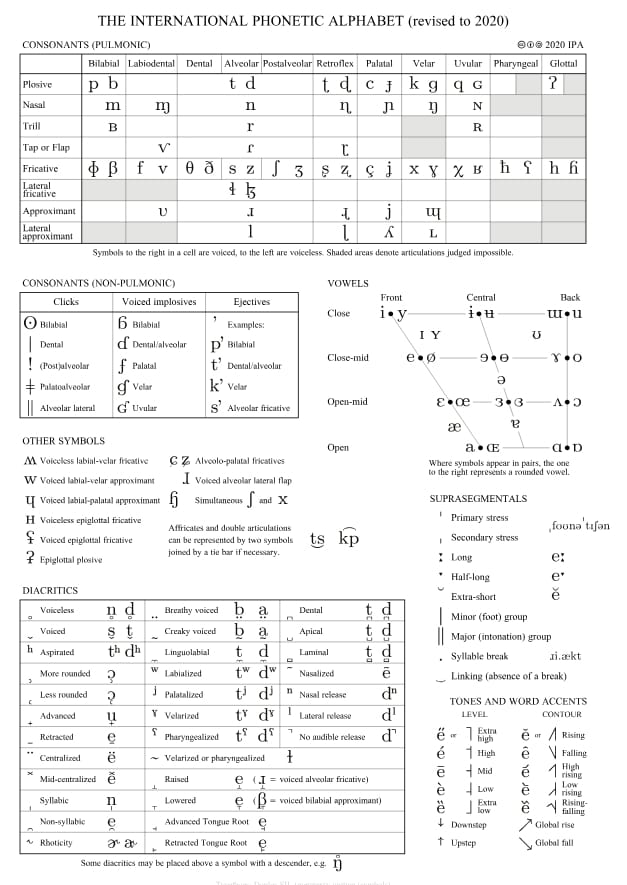
Outgrowing the Alphabet
My friend with two tongues is already a case for linguistic revision. How does a body modification like this fit into the current system? I’ve tabulated what new sounds could be made and adapted the IPA chart accordingly.
The consonants table shows the “manners” and “place” of articulation. This refers to how and where, respectively, the mouth and tongue constrict air. The rows on the consonants table describe “manners,” such as a plosive (air suddenly released) and the columns describe the “place,” such as dental. A plosive dental is a /t/.
Having a split tongue would allow the speaker new manners of articulation because they have two tongues. I named this a bifid (short for bifurcated). It describes sounds made with an additional gap for airflow, which would be between the tongues.
Finally there are subsections of the chart that describe nuanced qualities in speech production that describe things like intonation, stress or breathy voice. Two tongues opens up the option for two sounds being produced simultaneously, not a new sound, but stacked sounds made possible with two tongues. This would be denoted with a subscript.
“With the split tongue tip you would be able to accomplish different degrees of constriction simultaneously,” Jongman told me. “For example, the left part of the tip could make a stop (complete contact) while the right part could make a fricative - this would be like an affricate, the difference being that now the stop and fricative articulations occur at the same time while in an affricate they occur sequentially.”
Body modifications change the places of articulation too: People who can do Khecarī mudrā can articulate in the nasal cavity. I called this intranarial (inside nasal cavity) articulation.
New Symbols and What they Mean
Bri Uvina demonstrating three sounds described here by Lera Niemackl
Consonants (Φ, ѱ, Ю, አ, ∏, ე)
Φ and ѱ Bifids. I selected these symbols, φ (phi) and ѱ (psi) because they resemble a two-pronged affair. φ is voiceless (no vocal fold vibration), while ѱ is voiced (with vocal fold vibration). These symbols account for any phones produced in this manner within the 3 places in the chart. It’s created by keeping the tongue tips together while relaxing the downstream musculature, creating a slit where air flows, yielding distinctive sound.
Ю Intranarial Plosive. Airflow is completely blocked, then suddenly released. Similar to /k/ but intranarial.
አ Intranarial Trill. A trill is produced by rapid oscillation between articulatory positions, generally of the tongue but also lips. Akin to a rolling r, but would occur in the nasal cavity.
∏ Intranarial Fricative. A fricative describes a sound made by partial air obstruction that creates turbulence, like in /f/ and /s/. Here, obstruction occurs in the nasal cavity.
ე Intranarial Approximant. Almost like a vowel, but still a consonant for complicated reasons I’m not getting into. Air constriction is slight, like an /l/, but occurs in the nasal cavity.
Diacritics ( ᚜ )
Diacritics capture subtle differences in pronunciation. Even with identical manner and place between phones, minor variations create distinct sounds.
᚜ Bifid Divergence. This symbol, an ogham, I chose to denote a sound produced with the two tongues spread apart. The gap yields a subtle yet distinctive quality.
transcribed as [θ᚜]
Suprasegmentals (∞)
These are phonetic features that extend beyond units of sound like stress and intonation.
∞ Simultaneous. Made possible with two tongues, this symbol was chosen to denote when two sounds occur simultaneously. One tongue tip could be placed between the teeth while the other rests behind, producing two sounds simultaneously.
Transcribed as [θ∞s].
While they’re not officially recognized in any known language, these sounds are legitimate and producible by living human beings. As I formalized these phonetic possibilities, I began appreciating that language barely exists to its full potential.
The Future of Talking Heads
What I find compelling about human body modifiers is how what seems like a small adaptation breaks open a system previously thought to be comprehensive. It’s a reminder of the fluidity and dynamic nature of language.
Our lab at the Los Angeles Project builds technology for designer animals where the company uses genetic engineering to modify physical traits and is working towards engineering sapient intelligence.. (We too are body modifiers in a sense.) It’s a flavor of biotechnology that I call zootechnology [zoʊˈtɛkˈnɑləd͡ʒi]. I spend a lot of time thinking about how genetic manipulation could change these organisms in profound ways anatomically, neurologically and, of course, linguistically.
Could we create a linguistic nonhuman that pushes and pulls language in all its forms: semantics (meanings), syntax (grammars), phonetics (vocalization), pragmatics (contexts)?. Organisms have an innate capacity for communication. Perhaps we can engineer it.
We have data on the vocal capabilities of many animals, along with the mechanical and anatomical insights to explain them. Birds have impressive vocal abilities because of syrinxes that act like intricate systems of joints, levers, springs and muscles. Horses have a respiratory system completely separate from the mouth and tongue, demanding tongue-free phonetics. Like we did with IPA to make new sounds for two tongues, we could map out the individual units of sounds created by vocal animals.
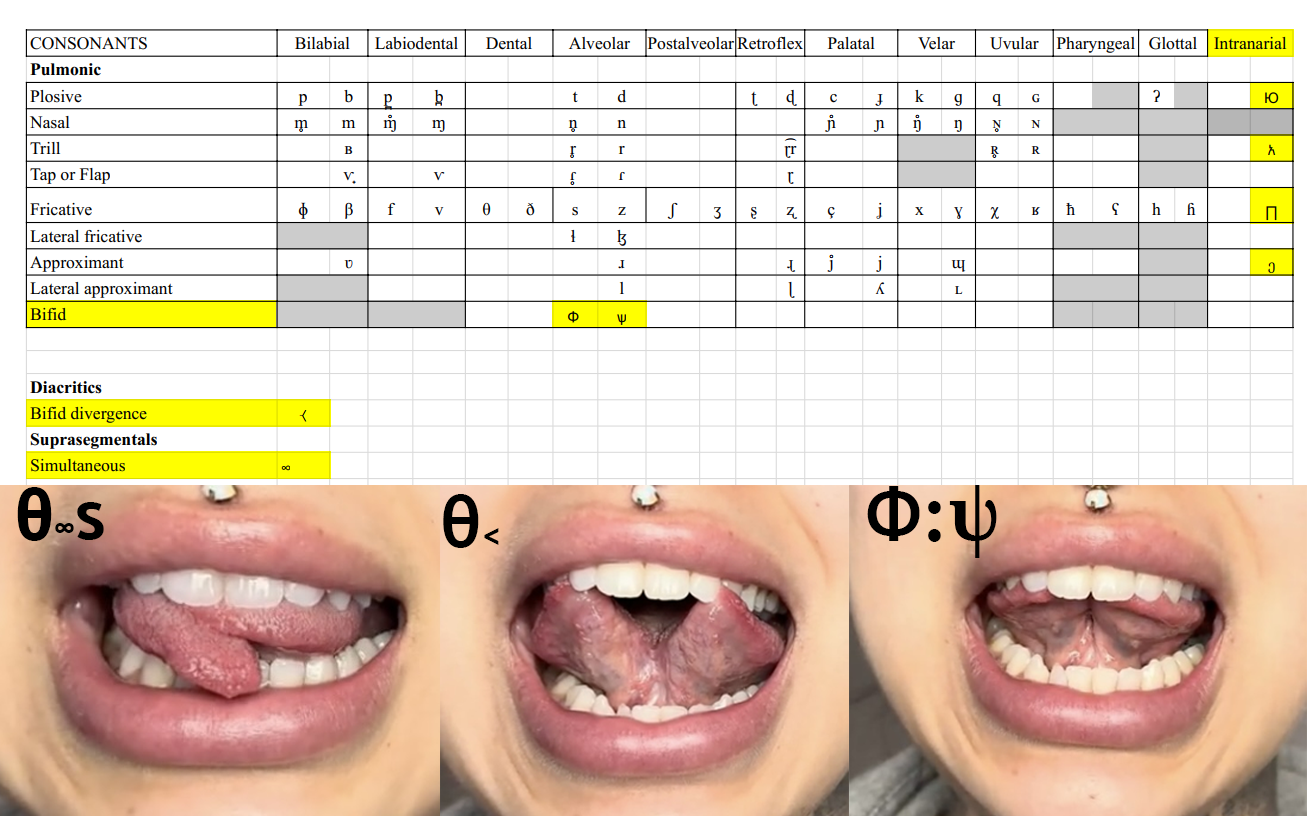
This helps define a measurable and finite "sound-making" search space. The requirements for vocalization are so concrete that they can even be replicated in a dead subject — for example, the researchers who made a dead lion roar. Further, researchers have attempted to create vocalizations from fossils with enough intact soft tissue, which lead to the reconstruction of mummy’s voices and even dinosaur vocalization.
My two-tongued friend was only the beginning. We may be in for many different kinds of talking heads, resembling a canine or an ape, and this case study can help us speculate concrete examples for what a future of multi-species linguistic exchange might look like.
This idea is still far ahead of what our society can imagine and what our technology can allow. Language is tricky. Even though we master it as young children before we master other seemingly simpler tasks, we have a hard time identifying the biology behind it.
How to Build a Shared Reality
Other talking organisms could challenge language as we know it in vast, abstract ways beyond our predictions.
Noam Chomsky’s theory of universal grammar states that all speakers are born with an innate ability to acquire language, and that all languages share fundamental similarities like dependence on sentence structure and grammar categories like nouns and verbs. This widely accepted theory would likely fall apart.
Language is alive. It is shaped by geography, culture, and technology, evolving under pressure like any living system. Silbo Gomero’s whistled language of the Canary Islands emerged from the need to communicate across vast distances. The coded slang of Polari formed in response to cultural exclusion, encoding identity and survival within its shifting lexicon. Internet-borne terms like "LOL" emerge from new modes of communication, showing how language absorbs and restructures itself around the tools that carry it. It is terminally adaptive.
We are not "apes" + "language"
And yes, for all its adaptability, language has remained a species-specific trait of humans. In this century, we may influence its evolution. It will hybridize and mutate, become something stranger, something less human in origin but more universal in scope. Spoken discourse may no longer be the exclusive domain of one species. Participation from a neo-canine, a linguistic primate, or an entirely novel organism is only one layer of a much larger transformation. This future could be within many of our lifetimes.
More interestingly, I think a future like this opens new dimensions of understanding. Other organisms experience reality through completely different sensory and cognitive hardware. We already know that the way organisms perceive the world is not uniform—so why should we assume that the way they structure meaning would be?
The existence of other linguistic organisms is not an augmentation of something lesser, but an emergent property of something new. Zootechnologists are not hacking an ape or dog's mind to give them language — we are not "apes "+ "language." These animals could give us blueprint for restructuring what's biologically possible.
If the IPA can adapt to accommodate anatomical differences, then language should also evolve to accommodate nonhuman bodies and minds. This primes us to imagine a future unconstrained by single-species technology and perception. It feels like a door to profound breakthroughs toward understanding nature and better cooperating in this universe.

